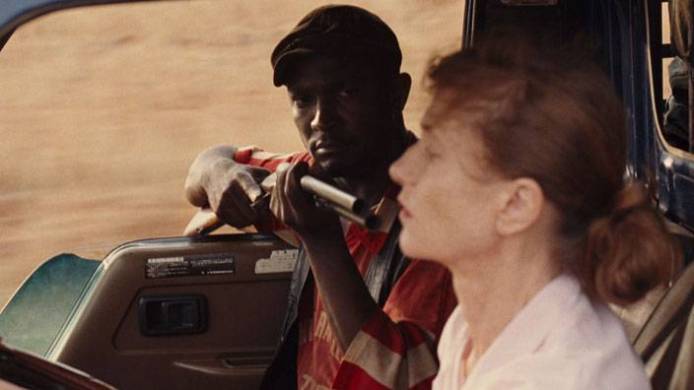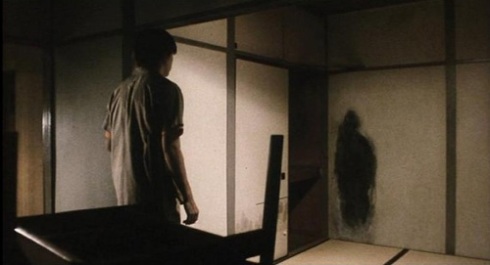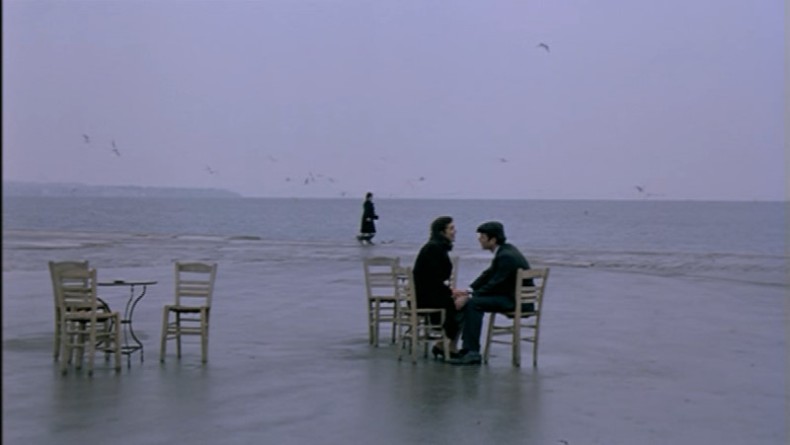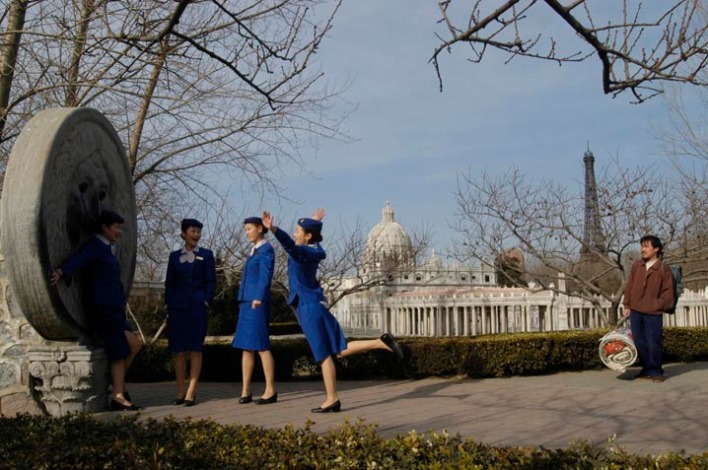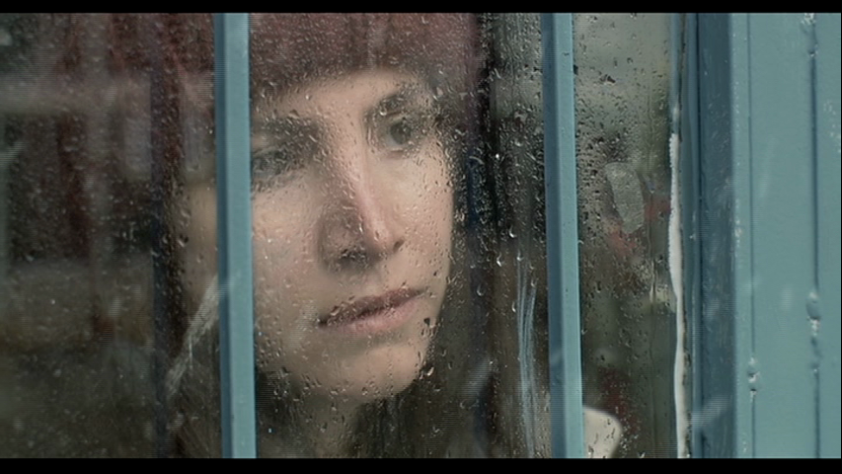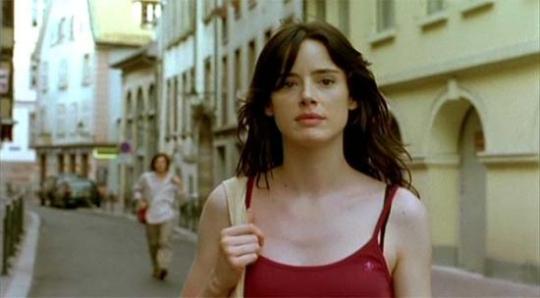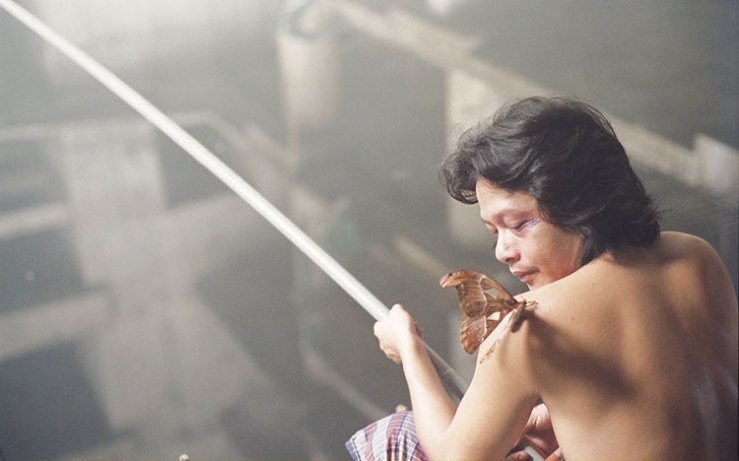20. White Material(2009) Directed by Claire Denis.
In an unnamed war-torn African country, a stubborn coffee plantation director, Mari, irrationally stays behind to pursue the completion of her crop, seemingly unconvinced of the severity of the turmoil and conflict around her. Drawn into her determined plan is her uninspired, young adult son, her ex-husband, and the workers she enlists to stay on amid the growing danger.
Denis’s film works on two levels. It’s both an intense character study and an objective narrative focusing on the repercussions of colonialism and the power struggle that ensues. Near the beginning of the film Mari recollects riding through the countryside on her motorbike, spreading her arms out against the wind as an action of freedom and joy. This strong connection to her work and home is what motivates her to put her life on the line to continue her existence amid the increasing chaos engulfing her. But the world she inherits is a fairy tale and it takes acts of violence and terror in front of her own eyes for her to realize this. Mari’s disillusionment reflects the ignorance of the West in its dealing with Africa from afar, not really understanding or feeling what is truly going on from the news clips and condensed articles.
The film is made all the more powerful by the harrowing, startling images of violence and children running around with guns, as well as the chilling, foreboding soundtrack by the Tindersticks. Denis does not convey a specific political agenda, spreading her criticism to all sides of the struggle while remaining sympathetic to Africa’s history and troublesome, immediate future.
19. Still Walking(2008) Directed by Hirokazu Koreeda
Several notable Asian directors of this era have admitted the influence of Ozu on their work, including the likes of Abbas Kiarostami and Hou Hsiao-hsien, who each made a film dedicated to the Japanese master. Perhaps the closest resemblance to Ozu’s work comes from his fellow countrymen, Hirokazu Koreeda, most recognizable in this family drama Still Walking.
The themes of past regrets, generational gaps, and suppressed feelings dominate the interactions at a family gathering for the anniversary of the oldest son’s death. Like Tokyo Story, a lot of the underlying tension is communicated through what is unsaid, slowly revealing itself through the performances, mis en scene and inaction.
The film objectively reflects on the lingering Japanese cultural dynamics, such as the preference for the older son, or the deep feeling of shame for past actions. The parents berate their son Ryota for his new wife, a widow with a child, as a way of making him feel bad about that fact he survived instead of his more beloved older brother Junpei. The mother admits to the man who Junpei saved from drowning that she only invites him to the anniversary each year so that he has to think about it and suffers.
As with most of Ozu’s film there is an ever present sense of remorse over the past, something which in the present comes as a missed opportunity to reconnect with loved ones. Despite these feelings, the characters reflect humanity’s pressing need to move on with life. Koreeda and Ozu are both critical yet understanding of these failed family get- togethers, offering little but a pensive acknowledgement of their existence.
18. Pulse(2001) Directed by Kiyoshi Kurosawa
Through a decade of film and art dedicated to the growing sense of loneliness and disconnection in the modern, technological world, no work has confronted this reality with as much gloom and nihilism as Kiyoshi Kurosawa’s pseudo J-horror masterpiece Pulse.
On the surface this is a genre film. The first half strings us along magnificently, creating a mystery and throwing in moments of terror here and there to keep us on our toes. But Kurosawa is much more concerned with the horror of urban alienation and our increasing distance from each other, as suggested by all of the individual acts of suicide and the ensuing disintegration of society in the film’s second half.
Pulse is a technical wonder; the sound and lighting design contribute greatly to the morbid atmosphere and feeling of impending doom. Kurosawa’s macabre tone and chiaroscuro arrangements allow the viewer to infiltrate the dark recesses of the characters’ minds, leaving us shocked, lonely and even a little spooked.
17. Demonlover(2002) Directed by Olivier Assayas
In an era when slow, naturalistic cinema has dominated the international festival circuit, Olivier Assayas delivers a hyper real, fast paced style that revives the wonder of film and its potential for diversity. Demonlover, and its deep, impressionism hasn’t been met with the warmest regard amongst film goers and critics alike, but the key is in looking beyond the confusing plot and focusing more on the themes and dark atmospheres that penetrate through every scene and frame.
The plot involves corporations competing over a new 3-D technology that will improve the quality of their anime sex websites. As the film progresses the storyline descends into kidnapping, blackmail, murder, espionage, rape and torture. None of the characters are likeable. All come off as cold, corporate predators, capable of doing anything if it means moving up in their world. They calmly discuss potential lawsuits over child pornography and worry about the legalities of snuff film.
It seems Assayas has chosen the perfect topic to make his points about the cutthroat nature of the international business world, but also about the way media affects us and our own actions. The main character of the film finds herself committing worse and worse acts as she tries to escape the hideous underworld she has unknowingly entered. This morbid sense of doom is conveyed brilliantly through the dark, modern cityscapes, images of characters shot through glass and the erratic editing. After viewing one of the violent hentai films the businessmen find themselves in a club with women dancing on stage amid streams of neon blurs— an eerie contrast of reality and entertainment. The film thrives on horrific, suggestive scenes like this and will reward patient viewers who approach the work with an open mind.
16. The Weeping Meadow(2004) Directed by Theo Angelopoulos
The first part of a planned trilogy, and to some degree a story based on the life of the director’s mother, spans 30 years, tragically showing the affects of both great wars on the continent and its people. Rife with symbolism and references to Greek classics, the story follows Eleni as she is adopted by a refugee family, marries her foster father, and elopes with her foster brother
The theatrical dialogue, mythic allusions and highly poetical style serve as a means of relating Greece’s recent tragic history with that of its past. This establishes a perfect setting for Angelopoulos to show off his brilliant sets and images, including a flooded village, ominous sheep hanging dead from a tree, and a group of mothers searching in a field full of bodies for their dead sons. There’s enough drama to fill the whole trilogy of films, and yet the overly romantic style perfectly accommodates the sweeping images, overcast skies, and devastating historical process.
15. The World (2004) Directed by Jia Zhang Ke
Urbanization, isolation, globalization, loss of traditional culture etc. etc. It’s no secret what Jia’s primary focus is but each of his films successfully creates its own world and cast of unique characters. In this aptly named film, that world is a theme park with scaled down representations of famous landmarks such as the Eiffel Tower.
We follow the downtrodden lives of the disenchanted workers at this theme park, eerily shot in the foreground with the monuments hovering over them like the buildings in a Chirico painting or the oil towers in Written on the Wind. The characters live in a nightmare world where they have little choice but to work under meager circumstances and living conditions, all the while watching their homeland and culture disappear. As such their only hope and resort is escape from their daily lives, brilliantly conveyed through the use of cell phone messages being delivered with dreamy, animation sequences.
But even escape is not so easily achieved as the ambiguous ending suggests and the path forward for China and Jia’s characters is as unclear as it was at the end of his last film.
14. Los muertos(2004) Directed by Lisandro Alonso
Recently released from a lengthy prison stint, middle aged murderer Vargas sets off in a boat through the jungle and fishing communities of rural Argentina to return to his home and now adult daughter. Director Alonso seems less concerned with Vargas’s feelings toward his heinous past and successful reintroduction into society than he does with man’s inherent propensity for violence.
The people and places Vargas revisits seem to have changed little, a suggestive comparison to Vargas’s own state and demeanor regarding his crimes and potential for further violence. We see him smoke out a hive of bees for the honeycomb and butcher a wild goat with withdrawn ferocity and precision, which serve as examples of man’s place in the kill or be killed world of survival.
The camera floats along at times focusing on the sky, drifting water, and moving branches, apparently another sign of nature’s indifference. The oft romanticized return to nature in this instance is a warning of man’s inclinations towards dominance and destruction.
13. Climates(2006) Directed by Nuri Bilge Ceylan
The film opens amidst a set of ruins, tracking a fractious couple on their summer vacation at a small seaside town. Isa takes a series of photos for his thesis while his girlfriend Bahar trudges up a hill to admire the surrounding view. First she laughs when she observes him tripping but then she starts to cry, perhaps reflecting upon the proximity of their relationship’s conclusion.
After an argument at a friends house Bahar cracks up in mad laughter when Isa tries to defuse the situation and make small talk with the host. The film is filled with these little indirect pleas by Bahar, which go misunderstood by Isa, and his meager attempts to coddle her. In this way it slightly mirrors Godard’s Contempt, in that the viewer is left just as uncertain about the characters mindsets as the characters are of each other’s.
The film moves through three seasons, tracking the passage of time and the couple’s inability to let go of their relationship despite its failure. Though Isa travels far to find her, Bahar has a fit of tears every time they meet. One still gets the feeling the couple lacks conviction in their feelings, and are only trying to escape their loneliness. Ceylan leaves most of the details unsaid, opting to let his stunning mis en scene do the talking, yet by the end one still can’t help but feel they’ve witnessed a modern tragedy unfold.
12. In the City of Sylvia(2007) Directed by Jose Luis Guerin
Jean-luc Godard famously said, “All you need to make a movie is a girl and a gun.” Spanish minimalist Jose Luis Guerin has made the formula even simpler, removing the gun from the equation. Plot is scarce, and instead the movie succeeds as a celebration of women and sunny days in the city.
The film follows a man who has returned to a city after being away for a long time. He sits in bed late at night, lost in deep thought, searching for answers. During the day he sits at cafes and sketches women, seemingly unable to achieve any kind of breakthrough. Finally, he sees a beautiful girl who he thinks he remembers from a previous visit. He follows her through alleys, past trams, and amid the citizens going about their day of work. During this time the viewer gets a peaceful and elegant look at the city, enhanced by the sounds that accompany every little crevice, shop and corner.
The power of the film lies in the wonder of the human mind and how memory, projections and beauty inspire. Just as the protagonist becomes obsessed with a woman he thinks he met six years ago, Guerin is transfixed by the lives and uniqueness of each of the women he films, ultimately bridging a connection to the culture and history of the city. The whole work has a positive and relaxed feel about it, a film bound to be appreciated by travelers, artists and introverts.
11. I Don’t Want to Sleep Alone(2006) Directed by Tsai Ming-liang
Two similar story lines and a couple of odd love triangles that could only come from the mind of Tsai Ming-liang are the basis for his first film shot in his native Malaysia. The crowded, narrow streets and corridors of Kuala Lumpur give us a perfect setting for the director’s favorite themes: loneliness, alienation, and longing in the modern world. And somehow there are images of destitution, desperation and humor often within the same scene.
A wandering foreigner is beaten up by a gang of con-artists and nursed back to health by an immigrant construction worker who falls in love with him. Meanwhile a waitress working at a cafe is forced into caring for the owner’s comatose son. It should be noted that both men receiving care are played by the same actor—a metaphor big enough for its own, separate discussion. The waitress in turn is later sought out by the wanderer, as both search for love despite not speaking the same language.
Characters must first make do with their meager possessions, then go up against all odds to connect with one another, and ultimately find love under the most basic of conditions. This idea is best shown in a scene where the two lovers fight off a poisonous haze engulfing the city by making out in between coughing fits, before finally giving in and breathing through the openings of the man’s pant legs. There are also several scenes of different characters carrying around a flea infested mattress through KL traffic, a comedic injection that is both a celebration of film history and of man’s ability to see the silver lining in life, despite its occasionally, overwhelming obstacles. Though the characters have every possible hardship thrown at them, they fight back and strive to make something out of very little.

